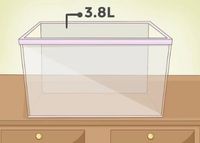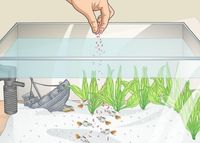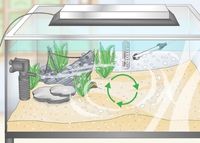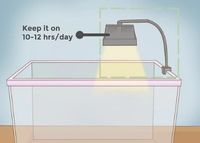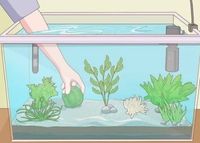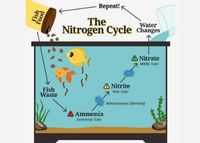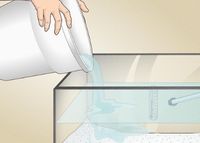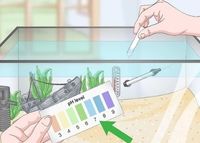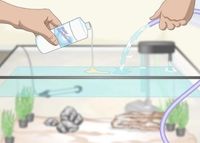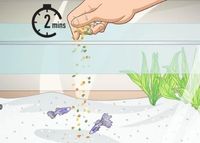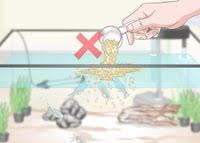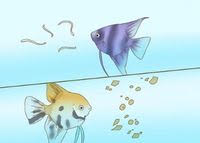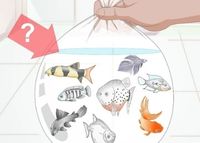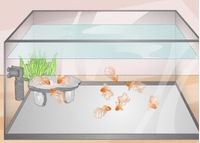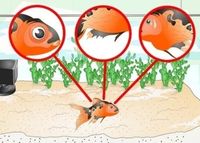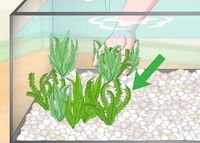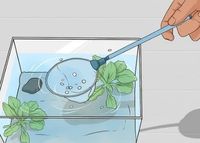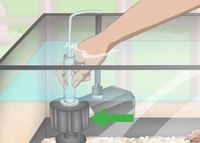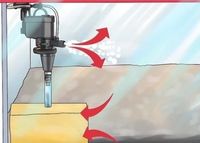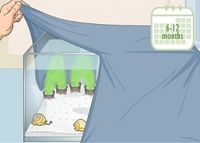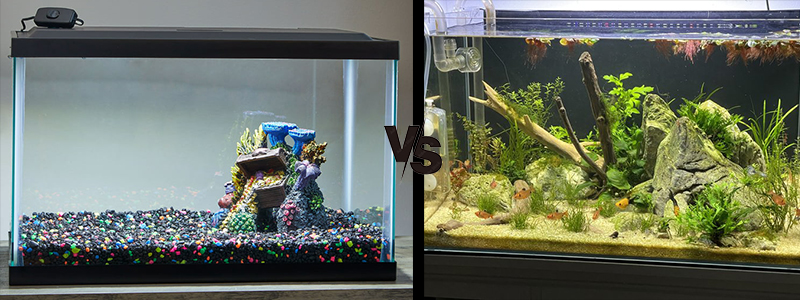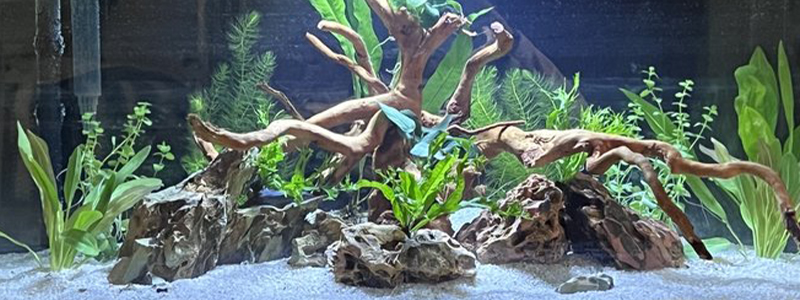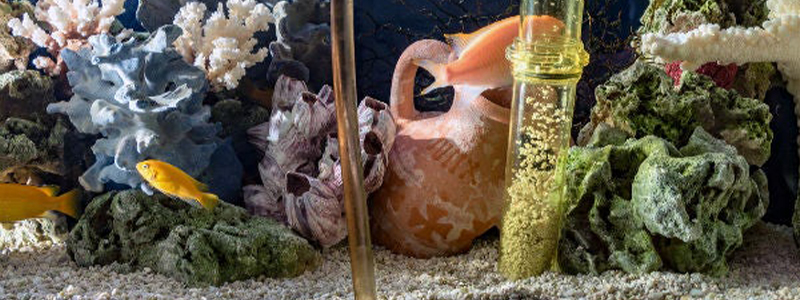If you’ve ever purchased a fish tank, then you would know that it requires a lot of care. It’s not all glitter and gold when it comes to having an aquarium. There’s a reason why aquarium enthusiasts spend days and even weeks deciding the aquarium equipment, water conditioner, chlorine neutralizers, etc. They understand good things need timely maintenance. Proper aquarium care is essential for maintaining a healthy and thriving aquatic environment. Before heading into the specifics, let’s first discuss the benefits of owning an aquarium in the first place.
Benefits Of Having An Aquarium
There are several benefits to having an aquarium in your office or home. Below are some of the main advantages of having an aquarium:
- Stress relief – Watching fish swim in an aquarium can have a calming effect on the mind and body, which can help reduce stress and anxiety.
- Educational opportunities – Aquariums can be a great learning tool for children and adults alike. They provide an opportunity to learn about the natural ecosystem, aquatic animals, and the importance of water quality.
- Enhance decor – An aquarium can add an interesting and unique element to your home or office decor. The vibrant colors and movement of the fish can create a peaceful and relaxing environment.
- Entertainment – An aquarium can provide endless entertainment and fascination for all ages. Watching the fish swim, interact with each other, and explore their environment can be very entertaining and engaging.
- Therapeutic benefits – Studies have shown that watching an aquarium can lower blood pressure, reduce anxiety, and improve mood, making it a great addition to therapy and healthcare settings.
Disclosure: This article contains affiliate links. When you follow a link to purchase the products, I sometimes earn a commission, at no additional cost to you. Read my full disclosure here.
Importance of Aquarium Care
- Health of the fish and other aquatic creatures – Proper care helps to ensure the health and well-being of your fish and other aquatic creatures. It involves maintaining clean and healthy water, providing the right type of food and nutrition, and minimizing stress factors.
- Beauty and aesthetics of the aquarium – A well-maintained aquarium is not only healthy for the fish but also visually appealing. A clean and well-decorated tank enhances the beauty of the aquarium and creates a peaceful and relaxing environment.
- Longevity of the aquarium – Proper care and maintenance can increase the lifespan of your aquarium and its inhabitants. Neglecting to maintain the aquarium can lead to the build-up of harmful toxins, diseases, and other problems that can ultimately harm the fish and damage the tank.
- Education and learning – Aquarium care can be a great learning opportunity for children and adults alike. By taking care of an aquarium, one can learn about the natural ecosystem, the importance of water quality, and the behavior of aquatic animals.
Step-By-Step Guide To Aquarium Care
Step 1: Setting Up The Aquarium.
- Choosing the right size and shape:
The size and shape of the aquarium will depend on several factors, including the number and size of fish you want to keep, the available space in your home or office, and your budget. A general rule of thumb is to have at least one gallon of water per inch of fish. - Selecting the appropriate equipment and supplies:
Some of the essential equipment and supplies you’ll need to include a heater, filter, thermometer, lighting, test kit, substrate, decorations, and plants. Be sure to choose equipment and supplies that are appropriate for the size of your tank and the type of fish you plan to keep. - Setting up the filtration system:
A filtration system is essential for maintaining clean and healthy water in your aquarium. There are several types of filters available, including hang-on-back filters, canister filters, and sponge filters. - Installing the heater and lighting:
A heater is necessary for maintaining a stable water temperature for your fish, while lighting is essential for the growth of plants and for the overall appearance of the aquarium. - Adding substrate, decorations, and plants:
Substrate provides a surface for beneficial bacteria to grow, while decorations and plants add visual interest and hiding places for your fish. Be sure to choose substrate, decorations, and plants that are appropriate for the type of fish you plan to keep.
Step 2: Maintaining The Water Quality
Secondly, once you’re done setting up your aquarium, it is important to note that tap water is not healthy for the fish. You must maintain good water quality which is essential for the health and well-being of the fish and other aquatic creatures in your aquarium. Here are some steps you can take to ensure optimal water quality:
- Understanding the nitrogen cycle: The nitrogen cycle is the process by which beneficial bacteria convert toxic ammonia into less harmful nitrites and nitrates. It’s important to cycle your aquarium to establish this beneficial bacteria colony before adding fish. You can use a fishless cycling method or add a few hardy fish to start the cycle.
- Performing regular water changes: Regular water changes are essential for removing harmful toxins and maintaining good water quality. Aim for a weekly water change of 20-30% of the aquarium volume, using a siphon to remove debris from the substrate.
- Maintaining proper pH and temperature levels: Different fish species have different pH and temperature requirements. Research the needs of your fish and adjust the pH and temperature accordingly. Aim for a pH between 6.5-7.5 and a temperature between 75-82°F, depending on the species.
- Using conditioners and additives: You can use water conditioners and additives to help maintain good water quality. Also, chlorine and chloramines are commonly found in tap water, so use a water conditioner to neutralize them.
Step 3: Proper Feeding and Nutrition
Once you’ve created the ideal aquatic environment for the fish, it is now time to do some research about their feeding and nutrition which will ultimately help them grow and improve their skeletal structures. Here’s what you can do:
- Selecting the right type of food for your fish: Different species of fish have different nutritional needs. Research the dietary requirements of your fish and select a high-quality food that is appropriate for their species. There are several types of fish food available, including flakes, pellets, freeze-dried, frozen, and live food.
- Feeding frequency and portion control: Overfeeding can lead to poor water quality, obesity, and other health problems in fish. Feed your fish small, frequent meals throughout the day rather than one large meal. Aim to feed your fish no more than they can consume within 2-3 minutes.
- Avoiding overfeeding: Overfeeding can lead to poor water quality, obesity, and other health problems in fish. Feed your fish small, frequent meals throughout the day rather than one large meal. Aim to feed your fish no more than they can consume within 2-3 minutes.
- Providing a balanced diet: A balanced diet for fish should include a variety of protein, fats, and carbohydrates. Look for fish food that includes a variety of ingredients, such as shrimp, krill, algae, and spirulina. You can also supplement your fish’s diet with live or frozen food, such as brine shrimp, bloodworms, or daphnia.
Step 4: Plant and Fish Care
Yes, food and nutrition are important for the fish. But nothing will work if you’ve added the wrong species in the same tank. This can be counterproductive because some fish are aggressive and territorial. Hence the following points need to be kept in mind:
- Choosing compatible fish species: Different fish species have different temperaments and requirements. Research the compatibility of different fish species before adding them to your aquarium. Avoid keeping aggressive or territorial species together and ensure that the fish you select have similar water temperature, pH, and hardness requirements.
- Maintaining a healthy number of fish in the tank: Overcrowding can lead to poor water quality, stress, and disease in fish. Aim to maintain a healthy fish population by ensuring that the size and number of fish in your aquarium are appropriate for the size of the tank. A general rule of thumb is to provide one gallon of water for every inch of adult fish.
- Treating diseases and illnesses: Fish can become sick due to poor water quality, stress, or disease. Watch for signs of illness, such as lethargy, loss of appetite, or abnormal behavior, and act immediately. You can treat some diseases with medications, but prevention is the best approach.
- Pruning and trimming plants: Plants can become overgrown and unsightly if they are not properly maintained. Regularly prune and trim plants to ensure they remain healthy and attractive. Remove any dead or decaying leaves and trim any overgrown branches or stems. You can also add plant fertilizers and CO2 supplements to promote growth.
Step 5: Cleaning and Maintenance
Once you’ve taken note of all the factors mentioned above, it is now time for the physical effort. You must ensure that your tank is spotless and even if you’ve kept artificial plants, they need to be cleaned every now and then to prevent algae development. Here’s what you can do:
- Cleaning the tank and equipment: Regularly clean your aquarium and equipment to remove algae, and other contaminants. Use an aquarium-safe cleaner and avoid using soap or other chemicals that can harm your fish. Scrub the inside of the tank, gravel, decorations, and other equipment with a soft brush, and rinse everything thoroughly with water.
- Replacing filter media and light bulbs: Replace your filter media and light bulbs regularly to ensure they are working efficiently.
- Inspecting and repairing equipment: Regularly inspect your aquarium equipment, such as the filter, heater, and air pump, to ensure they are functioning properly.
- Preventing algae growth: Algae growth is a common problem in aquariums. To prevent algae growth, minimize the amount of light your aquarium receives each day, keep your aquarium away from direct sunlight, and avoid overfeeding your fish. You can also add algae-eating fish or invertebrates, such as snails or shrimp, to help keep algae growth in check.
Conclusion
Maintaining an aquarium is a rewarding hobby that requires patience, dedication, and knowledge. By following the steps outlined in this guide, you can create a healthy and thriving aquatic environment for your fish and plants. Remember to choose the right size and shape of the aquarium, select appropriate equipment and supplies, monitor water quality, feed your fish a balanced diet, and perform regular maintenance and cleaning. With proper care and attention, your aquarium can provide years of enjoyment and beauty.

